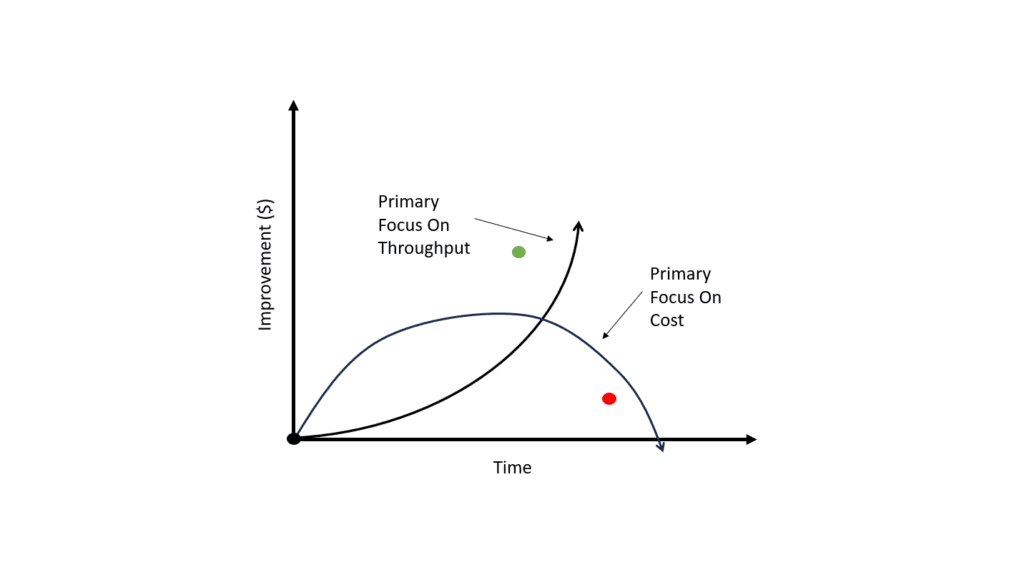In business growth strategy and operational improvement, organizations often face a critical decision: should they focus on increasing throughput (efficiency and productivity) or reducing costs? The attached diagram visually represents this trade-off, showing two distinct approaches and their long-term impact.
Table of Contents

Understanding the Diagram
The graph has Improvement ($) on the Y-axis and Time on the X-axis. It showcases two key business growth strategy focus points:
- Primary focus on Throughput (Green Point) – This approach leads to exponential improvement over time as businesses enhance efficiency, production speed, and revenue generation. The curve shows rapid upward growth, emphasizing sustainable profitability.
- Primary focus on Cost Reduction (Red Point) – Initially, cost-cutting measures improve financial metrics, but the curve flattens and eventually declines. This suggests that excessive cost-cutting may lead to diminishing returns, operational inefficiencies, and even negative outcomes over time.
Real-World Example: Manufacturing Industry
Consider a manufacturing company deciding between two strategic approaches:
- Throughput Focus: A factory invests in automation, streamlines production lines, and enhances workflow efficiency. As a result, production capacity increases, lead times decrease, and revenue grows due to higher output and improved market competitiveness.
- Cost Focus: The same factory decides to reduce expenses by cutting the workforce, using cheaper materials, and limiting maintenance. Initially, profits may rise due to lower costs, but over time, reduced quality, machine failures, and dissatisfied customers lead to a revenue decline.
Key Takeaways
- Short-term vs. Long-term Gains: Cost-cutting may offer immediate savings, but focusing on throughput fosters sustainable growth and innovation.
- Scalability and Competitive Advantage: Companies prioritizing throughput gain market dominance by meeting increasing demand and delivering better quality.
- Balanced Approach: While cost control is essential, a strategic mix of throughput optimization and cost efficiency often yields the best results while drafting a business growth strategy.
Conclusion
Organizations must evaluate their long-term vision when deciding between throughput improvement and cost-cutting. Investing in throughput maximization often leads to higher financial returns, resilience, and a competitive edge, whereas excessive cost-cutting can stifle innovation and hinder future growth. The key lies in making strategic decisions aligned with sustainable business success.
Connect with me if you want to discuss this topic. Or reach me on Linkedin.
